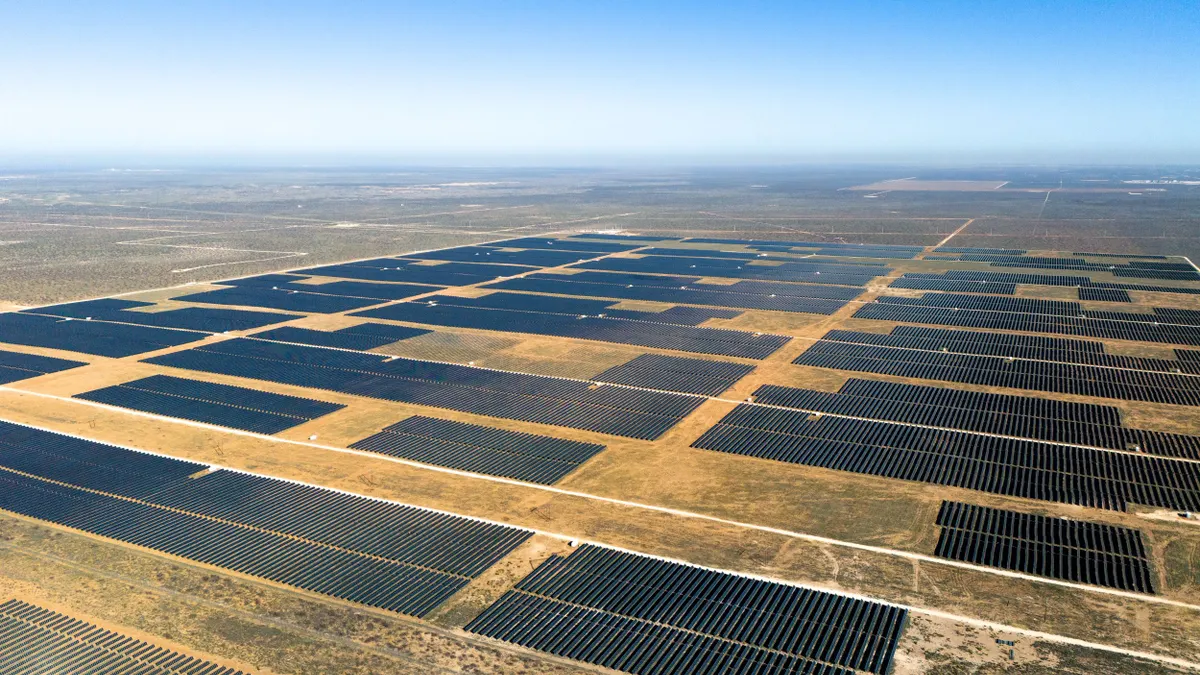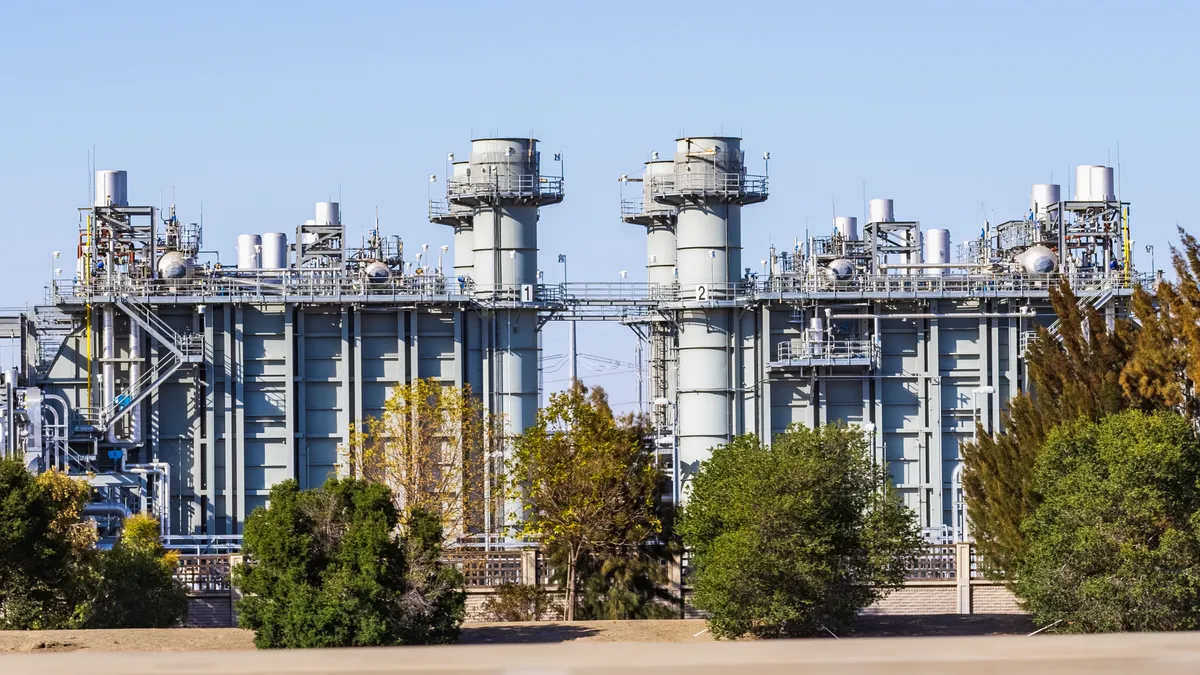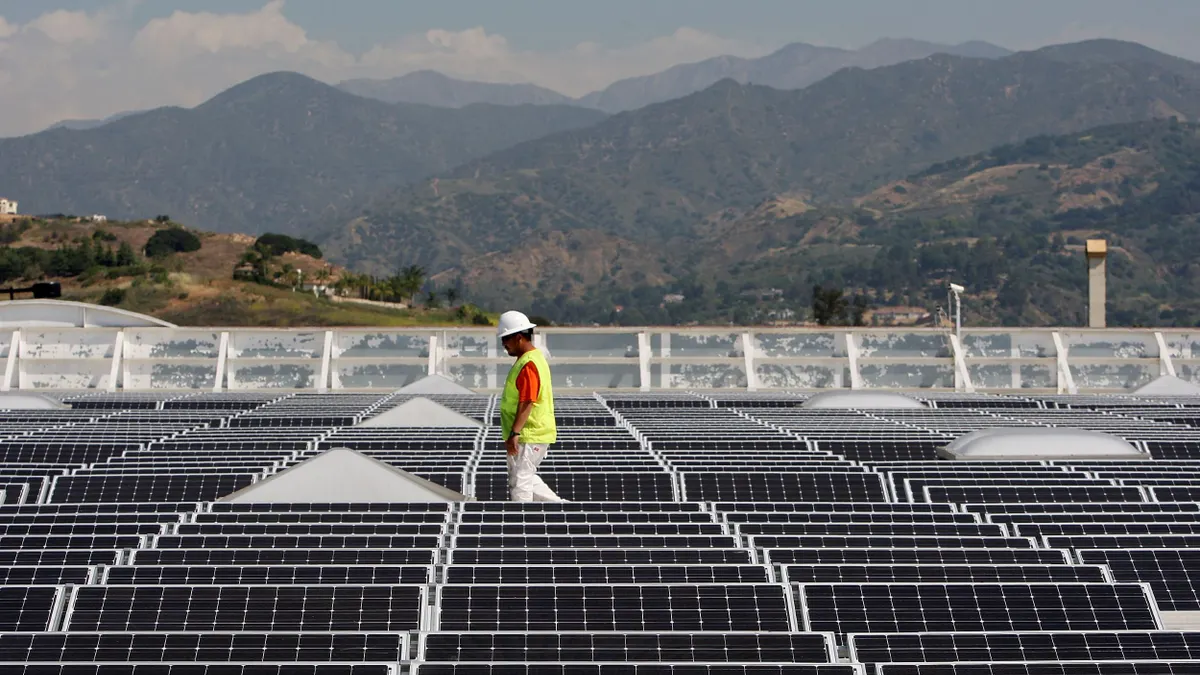Hundreds of billions of dollars in untapped new money can finance the U.S. power system's transition away from legacy fossil assets to renewables and distributed generation.
Utilities like Duke Energy and Xcel Energy have issued billions in green bonds to fund renewables development. Green banks in New York, Connecticut and other states are backing investments in distributed resources and energy efficiency. It appears much more institutional money wants in on the green opportunity.
"Green bonds are a capital-raising mechanism that a wide range of institutions could use to raise capital," Coalition for Green Capital Executive Director Jeff Schub told Utility Dive. “A green bank is an institution [capitalized by public funds] that invests capital in clean energy projects. [They] are complementary, capital raising and capital deploying.”
Together, they can attract hundreds of billions in institutional and financial market money to fund utility investments in large-scale renewables and public sector investments in local distributed generation. They can also work together to support utility transitions away from high-cost legacy generation to lower-cost "green" generation, stakeholders told Utility Dive.
Globally, over $788 billion in green bonds have been issued since the concept’s 2007 origination, according to new Bloomberg New Energy Finance data, and new issuances keep coming. Congress is considering proposals for a National green bank, which can help propel the energy transition if it can win the acceptance that major utilities told Utility Dive it deserves.
Utilities and green bonds
Only a few leading U.S. utilities have so far responded to the green bond opportunity. Of the approximately $41.6 trillion in U.S. bond obligations at the end of 2018, utility green bonds made up about $10 billion, according to a May 2019 Boston University (BU) paper.
This is due largely to today’s "low interest rate environment," which makes conventional debt "safe and easy to raise," the BU paper reported. Burdensome "reporting requirements and limits on the use of proceeds" have also made utilities reluctant to issue green bonds, despite investors’ willingness to accept lower interest rates to support green projects.
"Green bonds will be mostly financed by institutional investors like pension funds and insurance companies that prefer steady annual returns."

Jeff Schub
Executive director, Coalition for Green Capital
But new money wants in, BU reported. U.S. utilities could immediately "issue at least $250 billion to $500 billion in green bonds."
Reduced risk could attract more utilities into issuances. Top credit rating agency Moody’s found green project loans "had a 10-year cumulative default rate of 5.7% versus a rate of 8.5% for non-green projects," BU added.
"Over time, green bonds will be mostly financed by institutional investors like pension funds and insurance companies that prefer steady annual returns," Schub said. "We're not there yet, but it is changing."
Xcel Energy recently issued multiple green bonds, motivated by the "changing politics and economics in the states it serves," Schub said. "States like Minnesota and Colorado are moving away from fossil fuels, and green bonds are a good way to raise the capital to do it."
Xcel's first green bond in 2018 financed a Colorado wind project, and three more in 2019 financed wind projects in Texas, New Mexico and Minnesota. They attract "incremental investors" who are "looking to invest in green projects or renewables," including some who "will only invest in green bonds," Xcel Energy Chief Financial Officer Bob Frenzel told Utility Dive.
"That has created more demand for our bond products, and led to lower cost financing," Frenzel said. "Our August Colorado 4.1% green bond set the record for the lowest interest for a 30-year utility bond in history, and our September Minnesota 3.7% green bond broke that record."
"Assuming the markets remain favorable, we will continue to issue green bonds to finance the transition to clean energy," he added. "They will not be the only source, but a significant source of financing."
Georgia Power’s $325 million March 2016 issuance was the first green bond from a U.S. investor-owned utility (IOU). It allowed the company "to diversify its investor base by appealing to green-focused asset managers" and was "significantly over-subscribed," Georgia Power spokesperson John Kraft emailed Utility Dive.
Duke Energy issued $1 billion in green bonds in November 2018 and $600 million more in March 2019 to finance or refinance clean energy projects. "We didn't necessarily have to use green bonds, but it was an opportunity to demonstrate we are very focused on the kind of investments our customers want," Duke Energy spokesperson Catherine Hope Butler told Utility Dive.
There is a lot of money right now looking for sustainable investments or those that address the climate crisis, American Council on Renewable Energy (ACORE) Chief Operating Officer Bill Parsons told Utility Dive. "Because green bonds tend to attract investors and have a lower risk profile that lowers the cost of capital, we are only going to see more of them."
But while green bonds are taking off, it is not yet clear how big a role green banks will play in the delivery of green financing vehicles.
The rise of green banks
Xcel Energy worked with the some of the biggest commercial banks in the world on its green bonds, including Barclays, Credit Suisse, JP Morgan and Wells Fargo, Frenzel said. All were "supportive" and "proactive," which left Xcel with the impression that there is no "need for a state or nationally created green bank."
But financing for distributed solar "is often hard to secure because many private lenders are unfamiliar with and hesitant to finance clean energy," Aurora Solar senior content marketer Gwen Brown blogged in January 2018. "Government-backed green banks accelerate the growth of clean energy markets."
Green banks "use finance to help achieve public policy objectives," said ACORE’s Parsons, a former board member of Montgomery County's Green Bank. "Much of the work they do is on the local level with energy efficiency and distributed renewables."
The twelve green banks at the state, county and city levels across the U.S. are typically chartered to leverage their limited taxpayer or ratepayer public-funding capitalizations with support from local financial institutions like credit unions and community banks, he added. They support the emergence of new markets by backing what are perceived as risky technologies "until their risk profiles are understood."
Green banks are generally limited in two ways. They often have only the funds provided by enabling legislation and their operations, and they must avoid a political backlash from any appearance of using public funds to compete with the private sector, Parsons said.
To date, U.S. green banks have turned every $1 of public capitalization into $3.40 of private investment by providing loans that drive new investments in new markets, creating $3.67 billion of clean energy investment nationally through 2018.
The Connecticut Green Bank was established in 2011 as the first U.S. green bank
With private sector partners, the bank has deployed over $1 billion for state clean energy projects. In June, it became the second green bank to issue a green bond. It followed the Rhode Island green bank’s October 2018 $18.3 million green bond issuance for energy efficiency, and was the first green bank-issued green bond for solar, according to the Connecticut bank's EVP/CIO Bert Hunter. "We expect to do more of this type of financing," Hunter told Utility Dive.
The New York Green Bank $1 billion investment fund is capitalized by ratepayers through utility bill surcharges, New York Green Bank President Alfred Griffin told Utility Dive.
The biggest of the U.S. green banks, the New York Green Bank's enabling legislation specifies three operating criteria, Griffin said. Its investments must be directed at "greenhouse gas emissions reductions in the state of New York," they must make the bank "self-sustaining," and they must drive "market transformation."
Within the limits set by those criteria, the New York Green Bank's objective is to support "economically viable credit worthy business models in New York that have not yet gotten the attention of commercial banks," he said.
Hawaii, Rhode Island, California and Montgomery County, Maryland, have green banks with more modest capitalizations, Aurora’s Brown reported. "Other states exploring the concept include Delaware, Virginia, Colorado, Missouri, Massachusetts, Washington DC, and, most recently, New Jersey," she added.
A "green banking system" is needed to drive the emerging energy transition, University of California, Berkeley, Professor of Energy and Director of the Renewable and Appropriate Energy Laboratory Dan Kammen told Utility Dive. "It is the next big frontier."
Advances on that new frontier could deliver economic and energy transition opportunities, stakeholders told Utility Dive.
Getting and using new money
While green banks have emerged across the country at the state and local level, the energy transition needs the financial support of a national green bank because it is "fundamentally a construction project" that could require "as much at $4.5 trillion," according to Coalition for Green Capital’s Schub.
Some compromise version of the Green Bank Act of 2019, introduced in the House of Representatives in May or the National Climate Bank Act of 2019 introduced in the Senate in July, can provide that financial support, Schub said.
The Green Bank Act would raise $50 billion through green bond issuances to support state and local green banks. The Senate’s bill would raise $35 billion and create an independent nonprofit institution to invest in green projects.
Green banks have acceptance among Democrats and a majority of voters, but face a challenge in finding a path through a gridlocked congress.
A national green bank could bring a trillion dollars of investment, with some coming from consumers’ purchases of "green savings bonds," Schub said. "They would be like U.S. savings bonds and could raise capital while building broader political buy-in for the energy transition."
It will take some time to get to that level of green bank investment, but in the meantime, such banks can help on a smaller scale with the energy transition.
Utilities in organized markets are responding to emerging power sector economics by transitioning to cost-competitive renewables. They have built 30 GW of solar and 92 GW of wind. But "laggard" regulated utilities, electric cooperatives and public power entities have built just over 1.5 GW of solar and about 11 GW of wind, according to Rocky Mountain Institute Electricity Practice Principal Uday Varadarajan .
Those utilities "face significant disincentives to retire uneconomic assets because accelerated cost recovery reduces earnings for shareholders and increases customers’ rates," Varadarajan said. "That slows procurement of new generation."
Green banks and green bonds can eliminate those disincentives by providing new capital to finance renewables procurements and cost recovery for legacy fossil assets, he said. The capital "can also help mitigate the worker and community costs of the transition."
Green banks can "package" green bonds with "transfer payments and other types of assistance, like grants, equity financing, and local economic development financing," he said. Critically, they can also deliver "a subsidy in the form of discounted financing at below market rates, treasury financing. or even extremely low interest rate loans over a longer term."
"There are many public equities at stake that are generally not appropriate for private sector finance to take on," Varadarajan said. "But a green bank’s leverage can be substantial, allowing a relatively small appropriation to do a huge amount of financing and to deliver a lot of benefit."
Correction: An earlier version of this story misidentified affiliations for Bill Parsons. He is a former board member of Montgomery County's Green Bank.






















